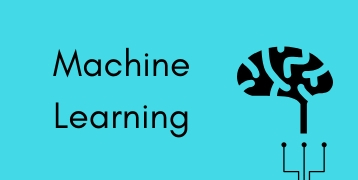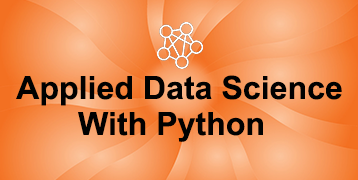Artificial Intelligence Training in Phoenix, US
(4.5) 1855 ratings.


(4.5) 1855 ratings.


Next Batch Starts
Program Duration
Learning Format
GoLogica Academic's Master Program features a structured curriculum, paving the way to Global scope.
GoLogica having a 15+ years of experience on career transforming programs with industrial oriented Skills.
GoLogica Advanced Programs delivers cutting-edge AI Training, offering insights into the latest trends.
GoLogica emphasizes practical learning with exercises, projects to equip you with real world application.

GoLogica provides the best AI course training program in Phoenix (USA) to give you the skills and knowledge to become an AI and machine learning expert. This all-inclusive program covers the latest breakthroughs in AI technologies, which will prepare you for a successful career in one of the fastest-moving fields in existence. Whether you are a beginner, an aspiring AI, or an expert wanting to get more knowledge, this course is adapted for every one of you.
Participants will experience practical practice with diverse AI tools, techniques, and programming languages that apply to building and deploying intelligent systems throughout the course. The key topics covered are machine learning methods, neural networks, deep learning, natural language processing (NLP), artificial intelligence (AI), and reinforcement learning. This program also covers real-world AI applications such as automation, data analysis, and robots. With practical exposure to popular AI tools like TensorFlow, and PyTorch, this training ensures you stay ahead of the curve in an ever-evolving technology environment.
This program trains industry professionals with a depth of experience and practical application in the class. The students will take on real projects while learning ways to overcome real problems through AI techniques. The program remains focused on theory and practical application. Participants will benefit, as they will come out fully equipped with the depth of concepts and desired skills in the market.
Since flexibility and convenience are what we regard at GoLogica, our Artificial Intelligence course is available online as well as instructor-led. This allows learning at your own pace while having expert guidance and support throughout the course. In addition to technical skills, the course guides certification preparation and includes an extensive set of interview questions and answers, boosting participant's readiness for AI-related roles.
Once this course is completed, they will be equipped with wide-ranging skills to be competent in AI, to some extent, Data science and Machine Learning, along with many other related types of roles. Enroll now and get set to be an Artificial Intelligence expert with the GoLogica new training program in Phoenix.
Python was mainly developed for emphasis on code readability, and its syntax allows programmer to express concepts in fewer lines of code.Python is considered a scripting, language like Ruby or Perl and is often used for creating Web applications and dynamic Web content.

Deep learning is part of a broader family of machine learning methods based on learning data representations, as opposed to task-specific algorithms. Learning can be supervised, semi-supervised or unsupervised. Some representations are loosely based on interpretation of information processing and communication.

GoLogica is offering an instructor led extensive course on Artificial Intelligence(AI) course. Artificial Intelligence is also called as Machine intelligence. This domain is constantly evolving and many applications are slowly moving towards this platform .

GoLogica training on Machine Learning will provide all the necessary training to become a certified Data Scientist with Proficiency in Python. Learn different algorithms like supervised, unsupervised, and reinforcement algorithms. Get hands-on experience in statistical techniques, ML modules, ML algorithms, focus on deep learning, basics of regression algorithms, SVM and Improving Performance, etc.

GoLogica provides Data Science with Python Training This course has been designed with a focus on quality and simplicity making it ideal for Beginners or for those looking for a refresher on Data Science with Python. It gives an engaging learning experience covering everything you need to know about Data Science.

GoLogica provides online lessons to help you get better and advance in your work. Join our Python data science course to learn Python skills, work with data, and get better at stats and machine learning. Make cool pictures too Learn from teachers who know a lot, work on real projects, and grow in the world of data science. Come with us now for a practical learning session.



This will help you to better understand the Artificial Intelligence industry.
you will be able to grow your career by broadening your proficiency in Artificial Intelligence Engineer.
With this, the students will be able to decide their careers in the right way.
We Help with face-to-face interaction through mock interviews & Exams

Powered by
Paypal
Debit/Credit
UPI
GoLogica Artificial Intelligence Certification holds accreditation from major global companies worldwide. Upon completion of both theoretical and practical sessions, we offer certification to both freshers and corporate trainees. Our certification on Artificial Intelligence is recognized globally through GoLogica, significantly enhances the value of your resume, opening doors to prominent job positions within leading MNCs. Attainment of this certification is contingent upon the successful completion of our training program and practical projects.

The U.S. Bureau of Labor Statistics forecasts a 42% increase in employment for Artificial Intelligence analysts from 2020 to 2027, significantly outpacing the average for all occupations. Additionally, Artificial Intelligence Ventures predicts 2.4 million unfilled Artificial Intelligence jobs worldwide by 2030.
According to the BLS, Artificial Intelligence professionals are well-compensated. The median annual wage for Artificial Intelligence Specialist was $90,000 to $150,000 PA. It’s depending on factors such as experience, location, and specific job responsibilities.
Are you preparing for a interview? If yes, our expert tutors will help you with this.
Joining NLP courses is not necessary. However, these courses can benefit you in your career as an AI engineer. NLP or natural language processing is a vital subfield of AI, which understands and processes human language. With this course, you will gain specialized knowledge and techniques for developing advanced AI models to understand and generate human knowledge.
It helps you become an expert in artificial intelligence. With this program, you will acquire knowledge and practical skills for understanding and implementing several AI technologies, concepts, and algorithms. The Master’s program includes machine learning, computer vision, natural language processing, deep learning, and many more.
Having knowledge of Python programming and a basic understanding of statistics is essential for students joining this Master’s program. This will help us understand the basic concepts of AI and ML.
This course will help you learn the principles of statistics for Python programming, feature engineering, machine learning, and data visualization. With this, you will learn how to make use of Python libraries such as Scikit-learn, TensorFlow, and Matplotlib. This course will also teach you machine learning techniques such as unsupervised and supervised learning. Also, will help you learn advanced concepts like layers of data, TensorFlow, artificial neural networks, and feature extraction.
It varies depending on the knowledge & experience of an individual in the field. The program is designed for freshers and individuals with a basic knowledge of this field. Thus, it would be good if you have knowledge or background in programming, computer science, and mathematics for better learning experience.
Yes! A graduate degree is needed. It would be good if you have a background in mathematics, computer science, etc. Also, having basic technical skills is enough to join this course.
Design, develop, and implement AI systems & algorithms. An AI engineer has to develop machine learning models, optimize algorithms, and evaluate data for certain tasks. They collaborate with software engineers and data scientists to develop intelligent systems to learn, acclimate, and make decisions.
It provides a comprehensive curriculum to provide students with an in-depth understanding of AI theories, applications, concepts, and algorithms. Once you complete this Master’s program, you will get a detailed understanding of AI. You can make use of this knowledge for developing real-world games, projects, logic restraint satisfaction concerns, prediction models, and many more. Also, will help you learn about the vital aspects of data science.
This course will help you attain a competitive edge over your peers and develop job-ready skills. The classes are taken by top-notch industry experts with rich domain experience. With this course, you will get to know about several AI concepts like computer vision, neural networks, machine learning, deep learning, natural language processing, etc.

300 learners (5) 6 Months View Program

126 learners (4.7) 6 Months View Program

155 learners (4.7) 6 Months View Program

263 learners (4.8) 6 Months View Program